Occupational Safety Training for Foam Cutting Machine Operation
99,000 ₫
Note: The above price is calculated per person and may vary depending on the number of trainees participating in the course and market fluctuations. For more accurate pricing support, please refer to the pricing list or contact our consulting staff directly.
Occupational safety is an important issue when operating foam cutting machines and must be addressed promptly to ensure the health and safety of workers and enhance the reputation of enterprises here. The Occupational Safety Training course is one of the effective solutions to raise awareness about accident prevention for workers operating foam cutting machines.
Table of Contents
Toggle1. Overview of Foam Cutting Machines
a. What is a Foam Cutting Machine?
A foam cutting machine is a device used to cut foam materials, such as sponge foam or insulation foam, into desired shapes and sizes. These machines are commonly used in industries such as packaging, construction, and furniture manufacturing.
Common types of foam cutting machines:
- Hot Wire Foam Cutter: Uses a heated metal wire to cut through foam. The metal wire is usually heated electrically, allowing precise cutting and shaping.
- Blade Foam Cutter: Uses a blade to cut foam. This type is often used for thicker foam materials or for cutting specific shapes.
- CNC Foam Cutter: Computer-controlled foam cutting machine capable of automated cutting based on pre-programmed designs and shapes. This type enables precise and repeatable cuts.
Advantages of foam cutting machines:
- High accuracy: Especially CNC machines allow cutting according to very specific shapes and sizes.
- Efficiency and time-saving: Machines can process large volumes of foam faster than manual cutting.
- Diverse shapes: Able to create complex and customizable shapes easily.
Applications:
- Packaging: Used to cut protective foam for products during transportation.
- Construction: Cutting insulation foam for thermal insulation applications in building.
- Furniture: Shaping foam to make cushions, pads, or other furniture products.
Foam cutting machines are essential tools in many industries, helping improve product quality and production efficiency.

b. Operating principle of foam cutting machines
Hot Wire Foam Cutter
- Operating principle:
- Hot Wire: The machine uses a metal wire (usually stainless steel) heated by electrical resistance current. When heated to a high temperature, it becomes an effective cutting tool.
- Foam Cutting: When the hot wire contacts the foam, it softens and melts parts of the foam, allowing the wire to cut through easily. The wire can move along curves or straight lines to create desired shapes.
- Temperature Adjustment: The wire temperature can be adjusted to suit the thickness and type of foam being cut.
- Advantages:
- Accurate and clean cuts.
- Widely used for cutting complex shapes.
Blade Foam Cutter
- Operating principle:
- Blade: The machine is equipped with a sharp blade to cut foam. The blade can be straight or curved depending on cutting requirements.
- Foam Cutting: The blade cuts through foam as it moves in the desired direction. The blade angle can usually be adjusted.
- Positioning System: Some blade foam cutters have positioning systems to support accurate size and shape cutting.
- Advantages:
- Simple and easy to use.
- Suitable for straight cuts and basic shapes.
CNC Foam Cutter
- Operating principle:
- Computer Control: The CNC foam cutter is computer-controlled, allowing programming of precise cutting shapes and sizes. Software programs control the machine’s movements to perform the cuts.
- Foam Cutting: CNC machines can use various cutting tools such as hot wire or blades to execute programmed cuts.
- Automation: The machine can automate the entire cutting process, from feeding foam to the machine to cutting and removing finished products.
- Advantages:
- Highly accurate cutting.
- Capable of producing complex and repeatable shapes.

c. Industries using foam cutting machines
Packaging Industry
- Application: Foam cutting machines are used to create protective foam pieces for products during transport and storage. Protective foam reduces damage and impacts to sensitive products such as electronics, ceramics, and medical devices.
- Example: Creating foam cushions for electronic device packaging or protective foam panels for fragile products.
Construction and Insulation Industry
- Application: Foam cutting machines are used to cut insulation and soundproofing foam materials for building applications. Insulation foam is used in building systems to improve energy efficiency and reduce energy consumption.
- Example: Cutting EPS (Expanded Polystyrene) or XPS (Extruded Polystyrene) foam for thermal insulation in walls, roofs, and floors.
Furniture and Decoration Industry
- Application: Foam cutting machines are used to produce furniture items like cushions, sofas, and decorative products. These products often require foam with precise shapes and sizes.
- Example: Cutting foam to make sofa cushions or foam components in custom interior designs.
Automotive Industry
- Application: In automotive, foam cutting machines are used to make foam parts for car interiors, such as seat cushions, sound insulation, and protective components.
- Example: Cutting foam to produce car seat cushions or sound and thermal insulation parts inside the vehicle cabin.
Healthcare Industry
- Application: Foam cutting machines are used to produce medical products such as hospital bed cushions, protective materials for medical equipment, and other health support products.
- Example: Cutting foam for patient bed cushions or foam components for medical support devices.
Entertainment and Events Industry
- Application: Foam cutting machines are also used in entertainment to create items like event decorations, children’s playgrounds, and advertising products.
- Example: Cutting foam for advertising signs, children’s play areas, or event decoration items.
Toy Manufacturing Industry
- Application: In toy manufacturing, foam cutting machines are used to make toy parts such as character shapes, soft details, and other components.
- Example: Cutting foam to shape toy characters or parts of model toys.
2. Overview of Safety Training Courses for Operating Foam Cutting Machines
a. What is Occupational Safety Training?
- Occupational safety training for operating foam cutting machines are sessions designed to raise awareness on preventing workplace accidents for workers. Those who directly work with foam cutting machines fall under group 3.
- The safety training course helps workers recognize and avoid hazards, reducing risks of accidents during work.
REGISTER FOR OCCUPATIONAL SAFETY TRAINING SERVICE
b. Training duration
Initial safety training duration
- Total training time is at least 24 hours, including examination time.
- 8 hours of theory on safety and labor hygiene policies and laws
- 8 hours of theory on basic knowledge of occupational safety and hygiene
- 4 hours of theory on specialized training content
- 2 hours of practical training on specialized content
- 2 hours of theoretical final exam
The safety training center will arrange training sessions over multiple days depending on employee schedules. Usually, there are 6 sessions over 3 days if the company arranges continuous study time.
Periodic safety training duration
- Before the occupational safety card expires, workers who want to renew must undergo periodic occupational safety training, with periodic training time at least 50% of the initial training time.
Explanation: total periodic occupational safety training time is at least 12 hours, including examination time. After completing the course and passing the exam, workers will be reissued or have their occupational safety card extended.
c. Training course content
| No. | TRAINING CONTENT | TRAINING TIME (HOURS) | |||
| Total | Including | ||||
| Theory | Practice | Exam | |||
| I | System of policies and laws on occupational safety and hygiene | 8 | 8 | 0 | 0 |
| 1 | Overview of legal documents on occupational safety and hygiene. | 6 | 6 | ||
| 2 | System of standards and technical regulations on occupational safety and hygiene. | 1 | 1 | ||
| 3 | Specific regulations of state management agencies on occupational safety and hygiene when building, expanding, or renovating factories, facilities to produce, use, store, and inspect machines, equipment, materials, and substances with strict safety and hygiene requirements. | 1 | 1 | ||
| II | Basic knowledge of occupational safety and hygiene | 8 | 8 | 0 | 0 |
| 1 | Basic knowledge about hazards and harmful factors at workplaces. | 4 | 4 | ||
| 2 | Methods to improve working conditions. | 1 | 1 | ||
| 3 | Safety culture in production and business. | 1 | 1 | ||
| 4 | Rights and obligations of employers and employees; safety and hygiene policies for workers; functions and duties of safety officers. | 1 | 1 | ||
| 5 | Safety and hygiene rules, signs, instructions, use of safety equipment and personal protective gear; accident first aid and occupational disease prevention skills. | 1 | 1 | ||
| III | Specialized training content | 6 | 4 | 2 | 0 |
| Comprehensive knowledge about types of machines, equipment, substances causing hazards; risk analysis, management of occupational safety and hygiene; safe working procedures with machines, equipment, and substances with strict safety and hygiene requirements. | 6 | 4 | 2 | ||
| IV | Final safety training exam | 2 | 2 | 0 | 0 |
| Total | 24 | 22 | 2 | ||
See more about training contents of the 6 groups
d. Occupational Safety Card
After completing the occupational safety training course and passing the exam, workers will be issued an occupational safety card (commonly called the occupational safety certificate group 3).
The group 3 safety card shows details such as full name, date of birth, job, and specific working environment. It also includes training duration, red stamp, and signature confirming course completion.
According to regulations on issuing safety cards stated in clause 2 of Article 24 of Decree 44/2016/ND-CP, there are two cases:
- If the employer and employee have a labor contract, the employer must sign, stamp, and endorse the safety card for group 3 workers after they complete training and pass the exam from a safety training provider.
- If the worker is freelance or temporary and does not have a labor contract, the training provider must sign, stamp, and endorse the safety card after training completion and passing the exam.

3. Hazards for Workers When Operating Foam Cutting Machines
When operating foam cutting machines, workers may face certain hazards if proper safety measures are not taken. Below are the main hazards and preventive measures:
High Temperature
- Hazard: Foam cutting machines with heated wires use metal wires heated to cut through foam. These wires can reach very high temperatures, posing a burn risk to operators upon direct contact.
Cutting and Impact Injuries
- Hazard: The blade or heated wire can cause cuts or sever fingers if handled carelessly. Moving parts of the machine may also cause impact injuries or hand entrapment.
Chemical and Emission Pollution
- Hazard: Some types of foam can emit toxic gases or dust during cutting. These fumes and dust can harm workers’ respiratory systems.
Electric Shock
- Hazard: Foam cutting machines typically use electricity to heat wires or control the machine. Electric shock risks arise if electrical equipment is poorly maintained.
Foam Dust and Waste
- Hazard: Dust generated from foam cutting can create an unclean work environment, cause discomfort, or affect health if not controlled.
Machine Malfunction and Breakdown
- Hazard: Machine malfunctions can occur due to technical faults or improper maintenance, possibly leading to accidents.
Foam Size and Weight
- Hazard: Large or heavy foam pieces can be difficult to move and handle, leading to muscle strain or bodily injury.
By recognizing hazards and implementing safety measures, the risks related to operating foam cutting machines can be significantly reduced, protecting workers’ health and safety.

4. Accident Prevention Measures When Operating Foam Cutting Machines
Training and Instruction
- Operator training: Ensure all foam cutting machine operators are fully trained on safe machine use, including understanding hazards and how to handle emergencies.
- Maintenance and repair training: Provide training on how to safely perform machine maintenance and repairs.
Use of Personal Protective Equipment (PPE)
- Protective gloves: Use heat-resistant gloves to protect hands from hot wires or sharp blades.
- Eye and face protection: Wear safety glasses or masks to protect eyes and face from dust, debris, and high temperatures.
- Hearing protection: Use earplugs or earmuffs to protect hearing from machine noise.
Regular Maintenance and Inspection
- Machine inspection: Conduct periodic maintenance and inspections to ensure parts work properly and prevent failures.
- Component replacement: Timely replace damaged or worn components to avoid machine malfunctions.
Safety Measures During Operation
- Use barriers and warning signs: Place barriers and warning signs around the machine area to prevent unwanted contact.
- Supervise operations: Ensure operators focus on tasks without distractions. Regularly monitor and check for unsafe behavior.
Ventilation and Dust Extraction Systems
- Dust extraction system: Install dust extraction to minimize foam dust and maintain a clean work environment.
- Ventilation: Ensure good ventilation to reduce air pollution risks.
Risk Management and Emergency Handling
- Risk analysis: Perform risk assessments to identify potential hazards and establish appropriate control measures.
- Emergency response plan: Develop emergency plans and train workers on how to handle urgent situations.
Installation of Safety Equipment
- Hot wire protection: Use protective covers or barriers to prevent direct contact with hot wires.
- Emergency stop switch: Install emergency stop buttons near the work area for immediate machine shutdown in emergencies.
Health Monitoring of Workers
- Periodic health checks: Conduct regular medical examinations to detect work-related health issues early.
- Psychological support: Provide mental health support and stress relief to maintain focus and work efficiency.
Compliance with Safety Regulations and Standards
- Regulation compliance: Ensure adherence to all current occupational safety and health regulations related to foam cutting machine operation.
- Update regulations: Regularly update policies and safety standards to maintain legality and effectiveness.
5. Benefits of Occupational Safety Training
An Toàn Nam Việt offers your business excellent benefits after completing occupational safety training courses as regulated in Decree 44/2016/ND-CP on Occupational Safety and Hygiene for companies, factories, and enterprises.
- Workers can identify potential accident risks and take preventive measures to avoid occupational accidents.
- Your company can establish risk prevention measures in production, operation, and maintenance processes.
- Reduce costs associated with occupational safety incidents.
- Uninterrupted production increases labor productivity and product quality.
- Comply with occupational safety laws to avoid legal risks.
- Build credibility and professionalism, elevating your company’s brand.
Nam Việt’s training courses are a solution to prevent external factors from affecting individuals, helping them avoid dangers that could cause injuries or even death.
REGISTER FOR OCCUPATIONAL SAFETY TRAINING SERVICE
6. Customer Feedback After Completing Training Courses
An Toàn Nam Việt has many years of experience accompanying many businesses in Vietnam generally and southern provinces specifically. This responsibility is very precious to Nam Việt, thus our Occupational Safety Training is increasingly professional. The driving force behind our growth comes from positive feedback and suggestions from enterprises. Below are some testimonials from partners we have served.
Hoa Đất Construction and Trading Joint Stock Company
“Nam Việt’s service helped us a lot in simplifying occupational safety and completing safety documentation for working processes. The consulting team was enthusiastic and timely in answering our questions. 5 stars for Nam Việt.”
See more customer interviews after using An Toàn Nam Việt’s services
7. An Toàn Nam Việt’s Occupational Safety Training Capacity
An Toàn Nam Việt is a reputable and quality occupational safety training center in Vietnam. Safety training sessions are continuously conducted at production factories, factories, or construction sites across the country (all 63 provinces of Vietnam).
REGISTER FOR OCCUPATIONAL SAFETY TRAINING SERVICE
Occupational Safety Training License
- An Toàn Nam Việt has been inspected and certified by the Department of Safety of the Ministry of Labor – Invalids and Social Affairs, confirming its qualification to conduct occupational safety and hygiene training. This further strengthens our training capacity.

Materials and Lectures
- Before safety training materials are used in ATLĐ courses, they are reviewed to ensure accurate knowledge and effective application.
- Instructors’ teaching methods are standardized according to An Toàn Nam Việt’s standards, developed by experts in occupational safety and hygiene training to maximize learners’ knowledge absorption.
Facilities
- Controlling classroom factors that affect training enhances teaching performance and learners’ knowledge absorption.
- Our training facilities include spacious classrooms meeting standards on size, lighting, training equipment, etc.
8. Nationwide Reputable Quality Safety Training Center
At An Toàn Nam Việt, we always prioritize occupational safety training professionalism. For us, imparting knowledge about self-protection to workers so they have a safety toolkit in their livelihood journey is a contribution to nation-building.
To ensure effective training, we meticulously prepare even the smallest details — from tools, teaching equipment to curriculum, materials, audio, and lighting.
Our safety training instructors are experts with many years of experience. They also have research projects identifying hazards across all industries and how to prevent them.
Lectures are practical and delivered in an engaging, easy-to-understand manner for workers. These factors help workers feel comfortable during training and absorb knowledge well. Of course, the training content strictly follows Decree 44/2016/ND-CP.
From this, workers learn many hazard prevention measures and how to apply them appropriately in their work.
Our training center proudly provides reputable and professional occupational safety training services with advantages such as:
- Competitive training costs while maintaining quality.
- Flexible training schedules to fit company production conditions.
- Quick certification procedures compliant with the law.
- Experienced instructors with many years in the profession.
- Classrooms controlled for factors that enhance teaching performance and learner knowledge absorption.
- Training materials tailored to occupational safety at enterprises.
- An Toàn Nam Việt works wholeheartedly and professionally to support customers promptly and accurately.

9. Additional Occupational Safety Training Materials
- Occupational Safety Materials for Foam Cutting Machine Operation
- Occupational Safety Training Document Set
- Occupational Safety Training Test Set
- Occupational Safety Curriculum for Foam Cutting Machine Operation
- Occupational Safety Multiple-Choice Test for Foam Cutting Machine Operation
No comments yet

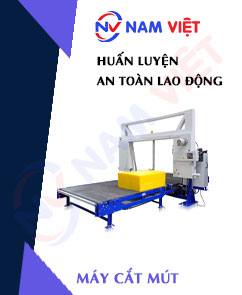
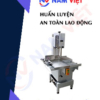
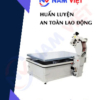



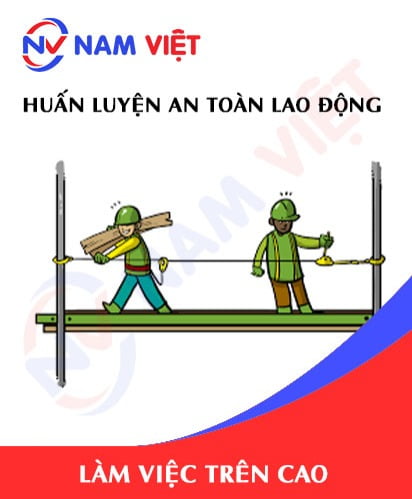




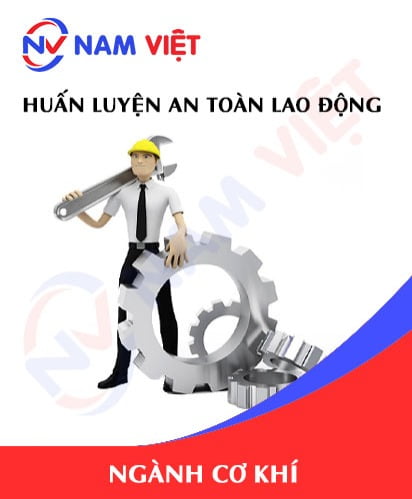

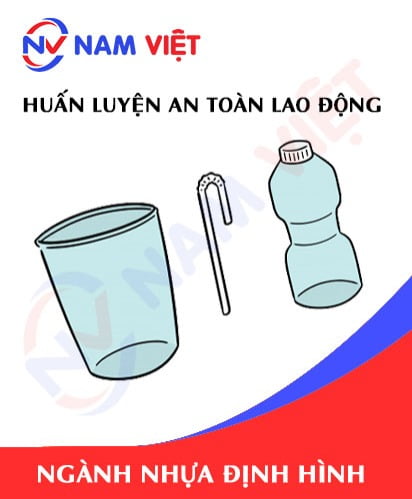
Review Occupational Safety Training for Foam Cutting Machine Operation
There are no reviews yet.